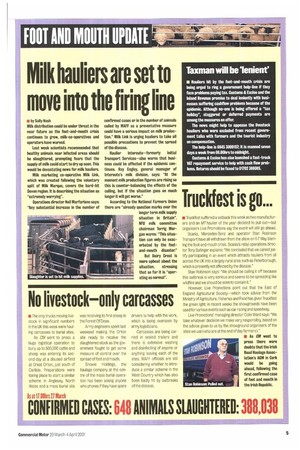Milk hauliers are set to move into the firing line
Page 7

If you've noticed an error in this article please click here to report it so we can fix it.
by Sally Nash Milk distribution could be under threat in the near future as the foot-and-mouth crisis continues to grow, milk-co-operatives and operators have warned.
Last week scientists recommended that healthy animals near infected areas should be slaughtered, prompting fears that the supply of milk could start to dry up soon. This would be devastating news for milk hauliers.
Milk marketing co-operative Milk Link, which was created following the voluntary split of Milk Marque, covers the hard-hit Devon region. It is describing the situation as "extremely worrying".
Operations director Neil Marfarlane says: Any substantial increase in the number of confirmed cases or in the number of animals culled by MAFF as a preventative measure could have a serious impact on milk production.' Milk Link is urging hauliers to take all possible precautions to prevent the spread of the disease.
Haulier Interoute—formerly Initial Transport Services—also warns that business could be affected if the epidemic continues. Ray Engley, general manager of Interoute's milk division. says: "At the moment milk production figures are rising so this is counter-balancing the effects of the culling, but lithe situation goes on much longer it will get worse."
According to the National Farmers Union there are "already question marks over the longer term milk supply situation in Britain". NFU milk committee chairman Terrig Morgan warns: "This situation can only be exacerbated by the footand-mouth disaster" But Dairy Crest is more upbeat about the situation, stressing that so far it is "operating as normal".








































































































